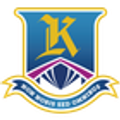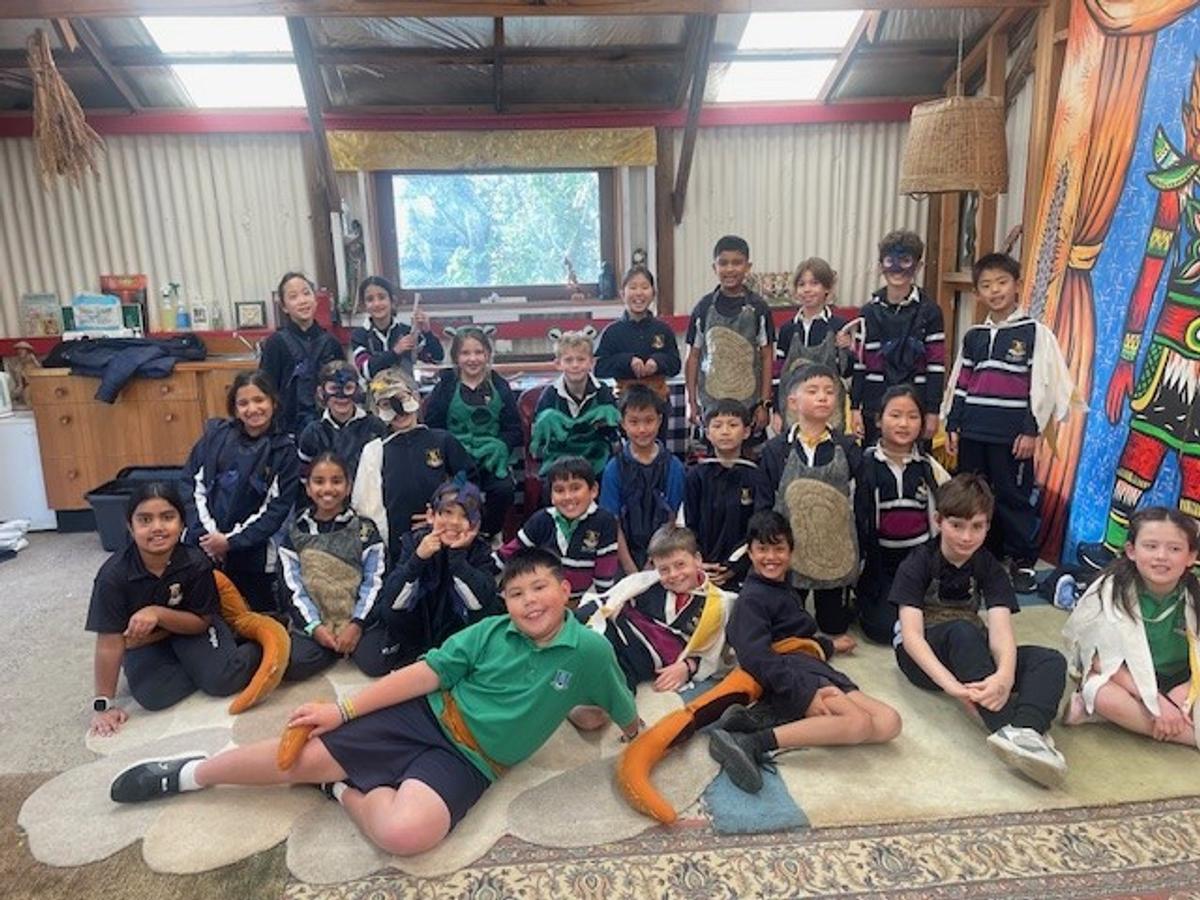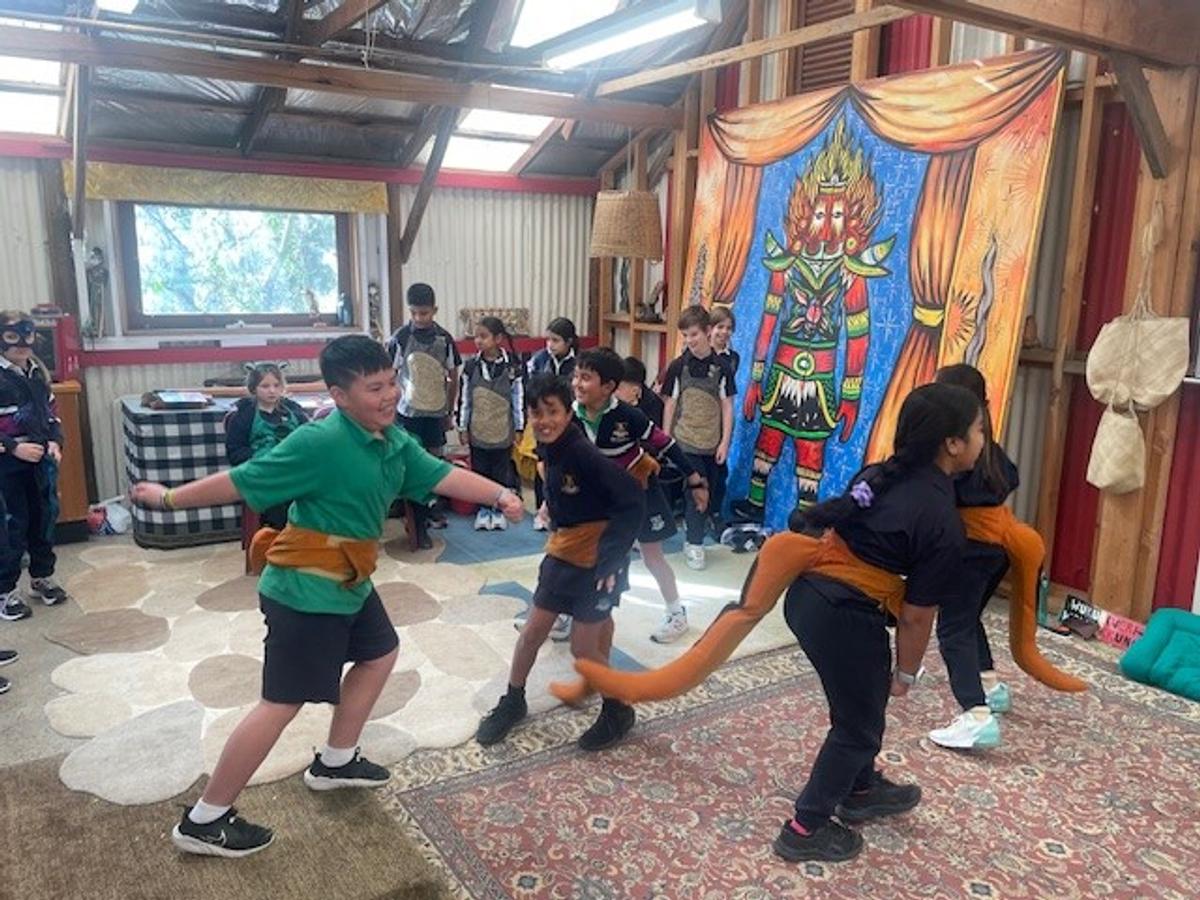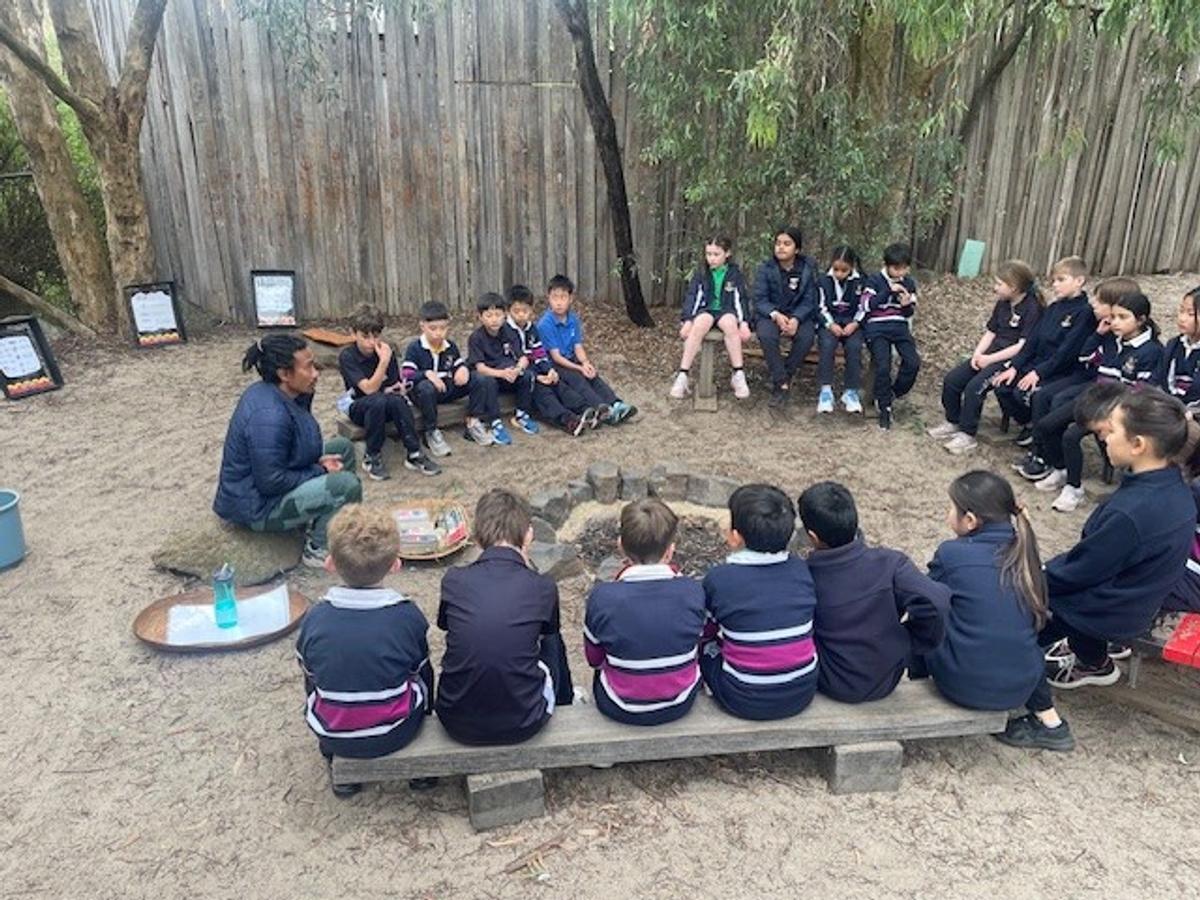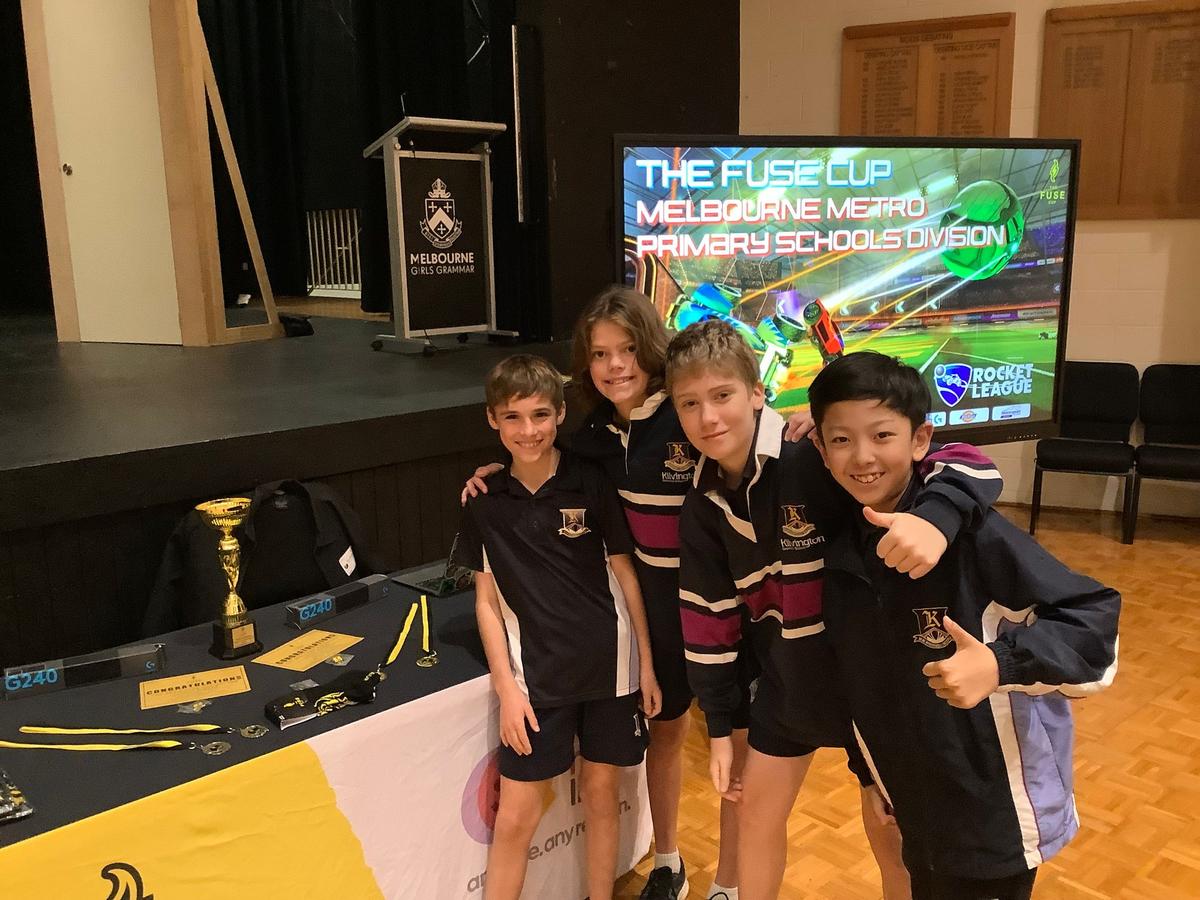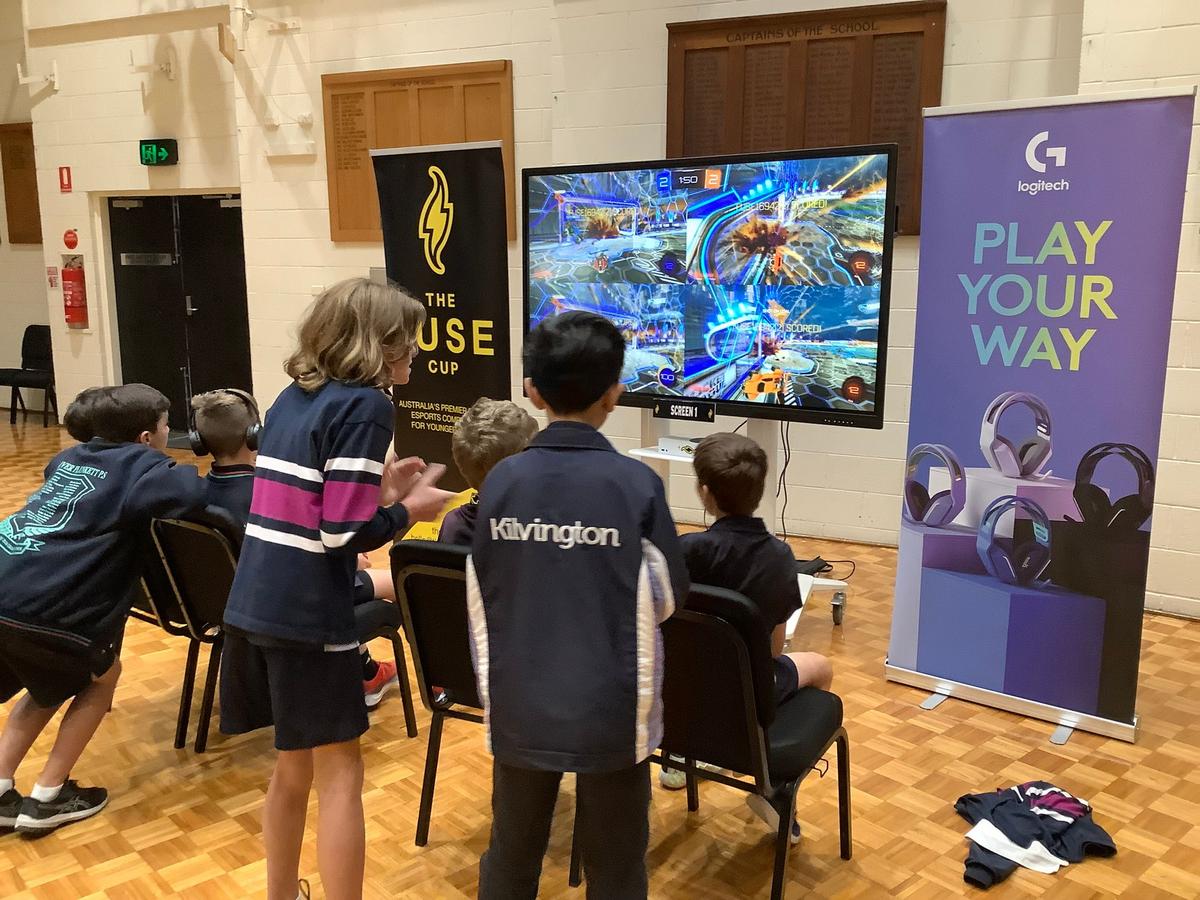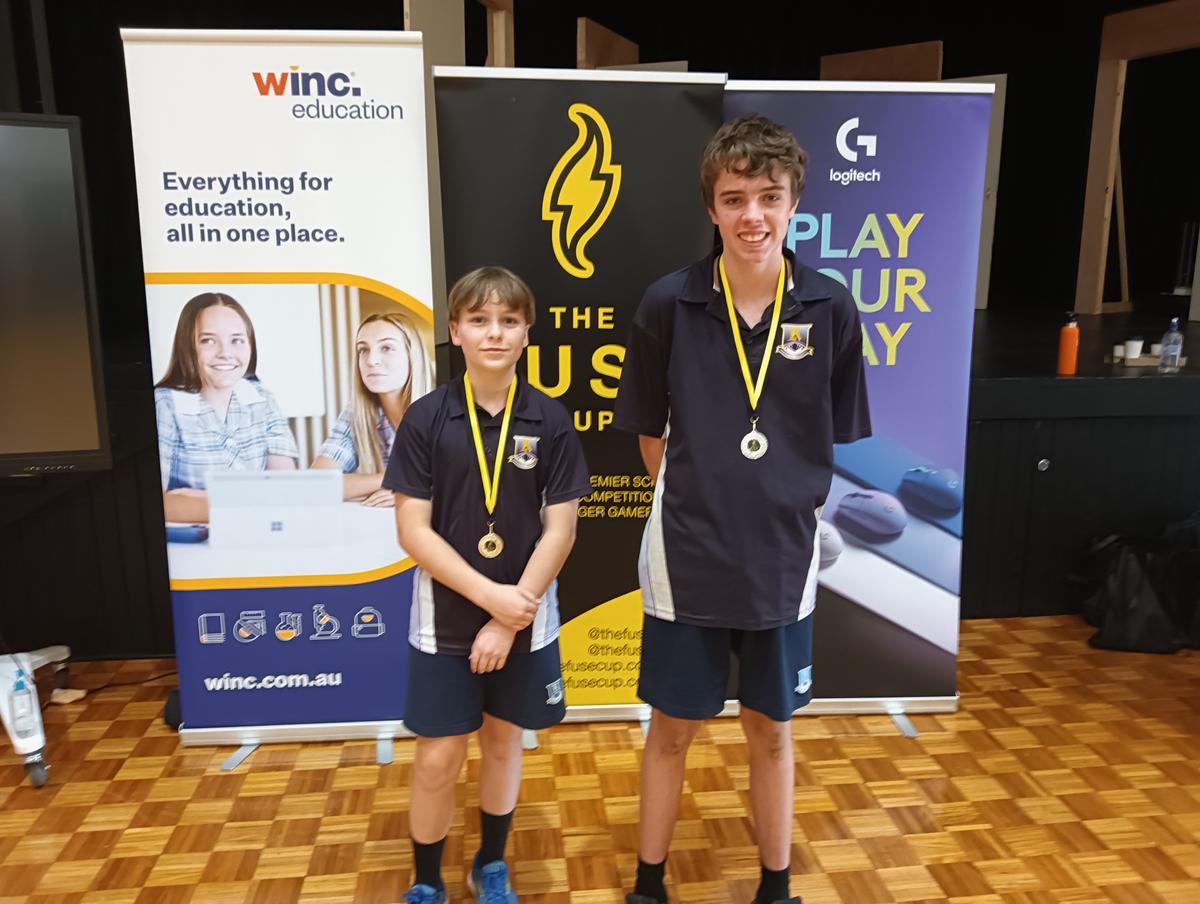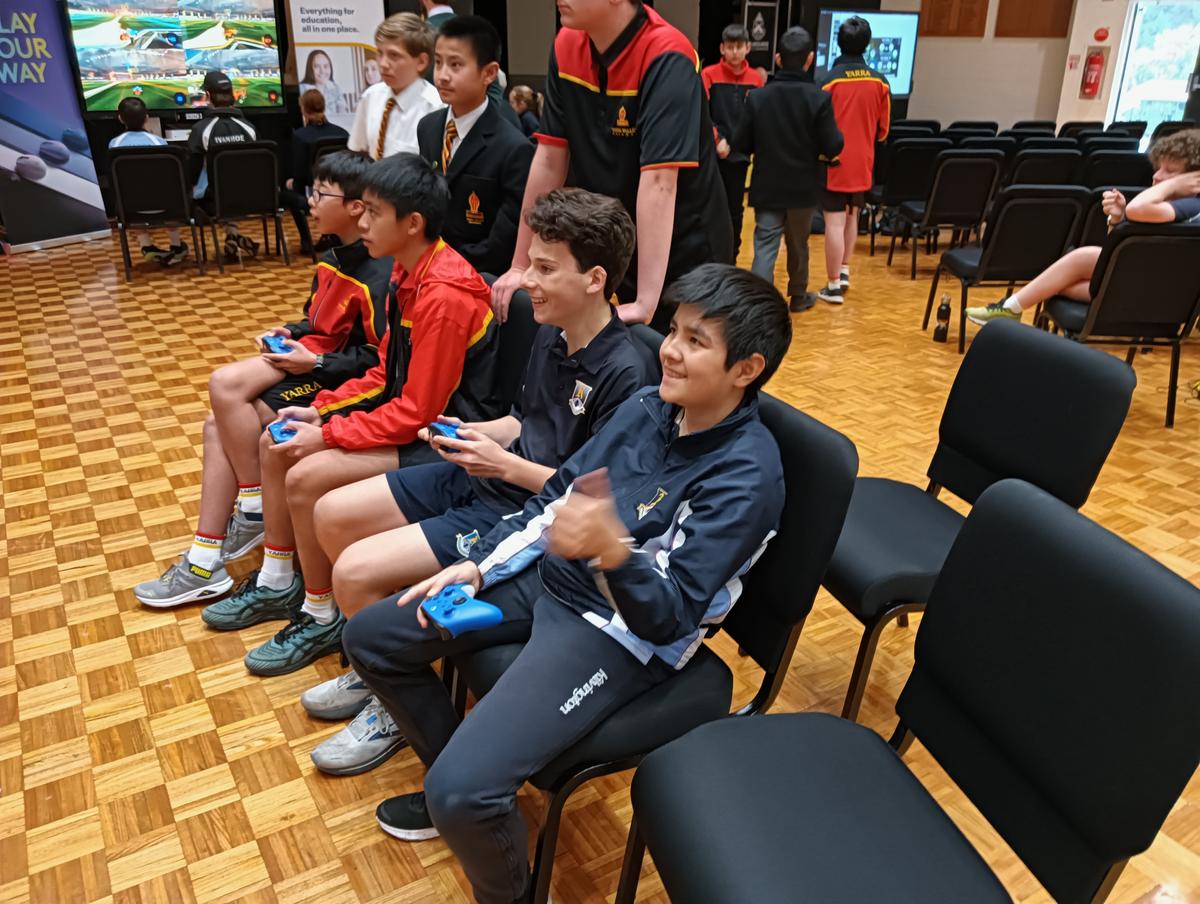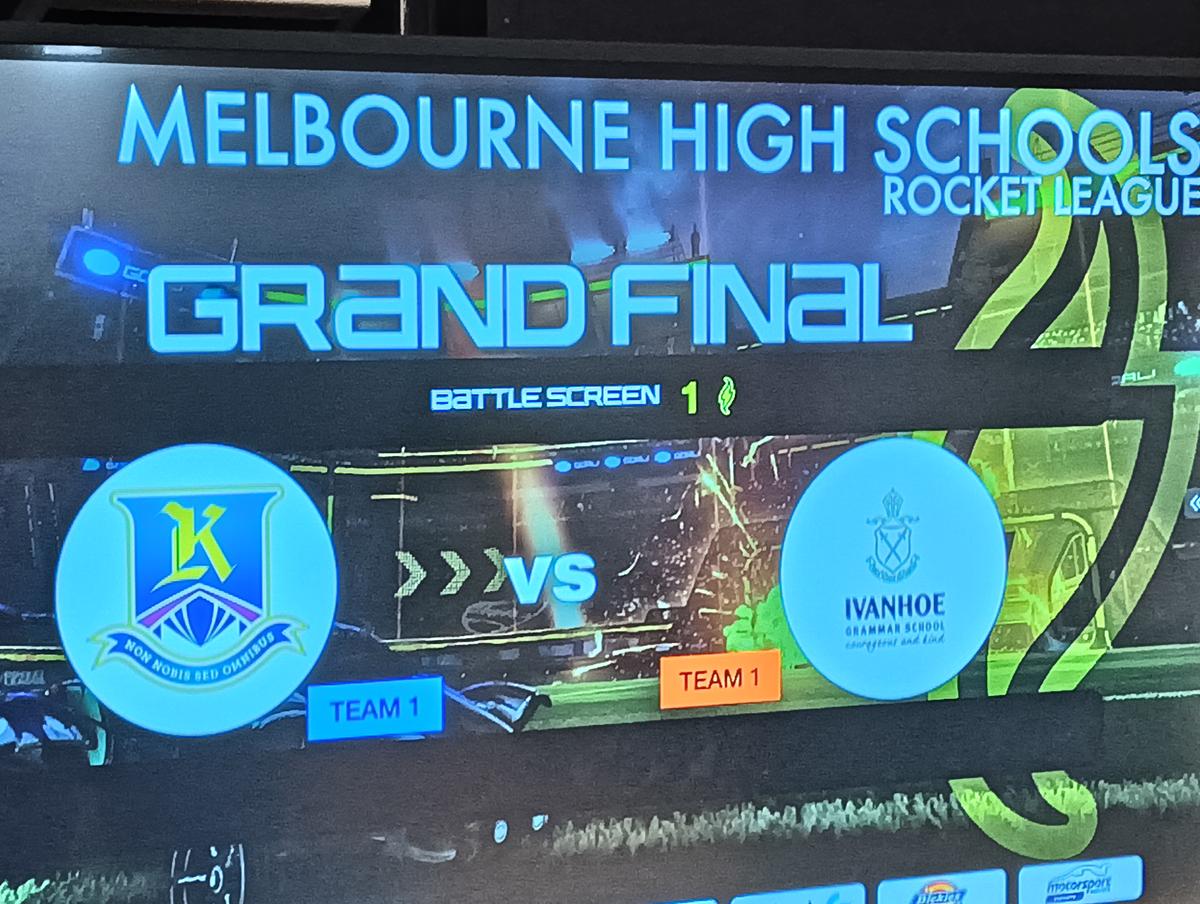School Highlights

Year 3 excursion to CERES
Anna Rowe, Year 3 Classroom Teacher
The Year 3s recently went on an excursion to CERES and had a great time! We have been focusing on Indigenous education and the sharing of stories in line with our History unit. Here are recounts of the day from two of our students.
Daisy Gu, Year 3
It was a cold frosty morning when we headed to CERES. Upon arrival, we met Subik, our instructor for the day.
In our first activity, we acted out 'Tiddalick', the Aboriginal story of a very thirsty frog. I had fun playing the role of a little kangaroo. We all learnt something new from this activity: take only what you need and do not be greedy.
Then it was time to taste some Indigenous plants. We tasted three different plants: salt bush, lemon myrtle and a native spinach. My favourite was the lemon myrtle. I didn’t like its taste, but I adored its smell! I also learnt a surprising fact about the native spinach - that it contains toxins and needs to be properly prepared before you eat it!
Next, we got the chance to use the pigment ochre. Ochre is so special that if you don’t have permission from an Indigenous elder, you cannot get it. When the ochre dried, it felt all crunchy on my arm. I was so thrilled that I got to use ochre and put some on my face. The girls had a symbol that means hunting from one place to another, and the boys all got Bunjil wings and the six islands.
By this time, I was super tired and, sadly, we had to leave. I thought that CERES was a wonderful experience. My favorite part of the day was using ochre and learning all about Indigenous culture and traditions. I loved the experience of tasting new foods, and I had great fun with my friends. I would love to go again.
Emily Piao, Year 3
On Tuesday 4 June, the Year 3s went on an exciting excursion to CERES with Mrs Chandler, Mrs Rowe, Mrs Cai and Tracy.
First of all, our instructor, Subik, told us about the Indigenous languages and what some sacred words meant. We learnt that 'Wominjeka' actually meant 'come with a purpose'.
Next, we acted out 'Tiddalick', an Aboriginal story. Each House got to represent an animal: Fethers were eels, Burman were possums, Barrett were the white cockatoo and Fysh were kangaroos. Mrs Rowe picked Elise and Grayson to be the little frogs (the main characters). While acting, I tried very hard not to laugh because I found the story funny.
After a recess break, we moved on to learning about plants. But first, Subik told us about some of the native Australian creatures who were dwelling at CERES. He also shared that beautiful CERES used to be a rubbish tip in the 1980s! We couldn't believe it!
Then we walked to the first plant we were going to taste, the salt bush. Subik warned us to only take a couple of leaves. Once we tasted it, we realised that it was salty! Some of the students didn’t like it, so they spat it out.
After the salt bush, we went to the lemon myrtle tree. Subik told us what to use it for and what we needed to do before eating it. We thought he'd pick a leaf off the tree, but he'd already prepared one for the class. After washing the leaf, he gave it to the teachers to share it around equally. The smell of the leaf was like lemon and very strong. It also tasted like lemon: sweet, sour and a little bit bitter.
After that, we moved on to the next bush, native spinach. Subik warned us not to eat the native spinach everyday because it would be bad for our stomach. He also explained what to do if you wanted to eat it; we had to first soak it in hot water for a minute. He'd already prepared these leaves for us to taste. This plant was his favorite because you could use it to make a tasty spinach pie.
Then it was time for a lunchbreak. We ate our meals and enjoyed about 20 minutes of playtime before being called to line up for our final activity: painting with ochre.
Subik took us to a place with a Bunjil mural and explained that painting with ochre was allowed only for Aboriginal or Torres Strait Islanders, or if you had permission from an Aboriginal Elder, because ochre was usually used for special reasons.
Lucky for us, CERES had an Aboriginal tribe leader working with their team and had allowed Subik to share his culture with us. He also told us to share the story we drew on our arms with our families, as well as the one he would paint on our faces if we wanted to. My story had my family around our meeting place and a rainbow, meaning we were happy.
Finally, it was time to leave CERES and take the bus back to School. Overall, I think the Year 3 excursion to CERES was a success, and I recommend going there to have some fun and to learn about the amazing culture of Aboriginal people.
Kilvington eSports teams compete in Fuse Cup
YEARS 5 AND 6 FUSE CUP RESULTS
Celestine Yeung, Digital Technologies Teacher
Earlier this term, Years 5 and 6 students from the Junior eSports Club participated in The FUSE Cup 'Rocket League' competition.
Our students managed to achieve some great results in the competition. Ethan Shi and Ollie Leighton made it to the quarter finals, while Dante Di Felice and Otis Fifoot finished third overall!
I'm so proud of the resilience, teamwork and sportsmanship displayed by the students throughout the day. Stay tuned for the Just Dance 2024 competition happening in Week 10!
YEAR 8 FUSE CUP RESULTS
Will Frantz, Robotics Coordinator
In May, our Year 8 eSports team participated in the Fuse Cup ‘Rocket League’ competition held at Melbourne Girls Grammar School.
Representing Kilvington, students Kian Ptok, Blake Becher, William Casey and Oliver Gray competed in pairs against other schools in the Melbourne Metro High Schools Division.
Kian Ptok and Blake Becher performed admirably, advancing through the early rounds to reach the quarter finals.
Meanwhile, William Casey and Oliver Gray went two steps deeper into the competition, making it all the way to the Grand Final. They ultimately finished in second place and were thrilled to take home medals.
Congratulations to them and to all our team members for a fantastic effort and a great day of competition.
